The "Chain" of Samsara
The outermost circle of the Wheel of Life, contains twelve unique images these are called dvadasanga pratityasamutpada or 12 Interdependent Factors. Each of these factors can be thought of as the links of a chain, each is caused by the previous and leads to the next, this in essence, constitutes the reason for the endless cycle of death and rebirth - which is called Samsara.
Samsara, the Wheel of Life, might I remind you, can be understood as Buddhist perception on life and the reason behind existence. It begins at the subconscious state of Bardo, otherwise known as the intermediate state, continues into birth and is completed at the moment of death, thus the literal translation : the Wheel of Life.
In this article, we will focus on the understading each of the 12 factors and the corresponding part on the painting itself.
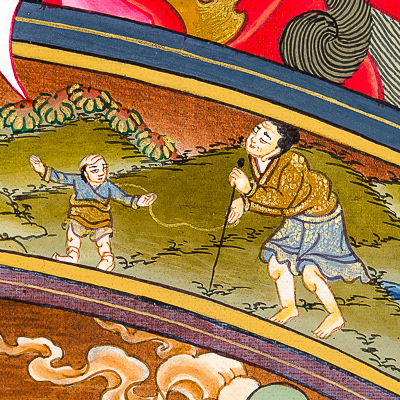
( 1 ) IGNORANCE
sanskrit. Ayida
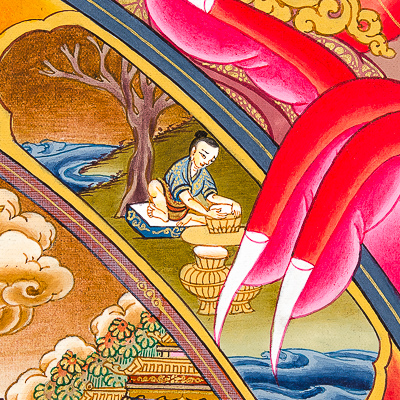
( 2 ) KARMIC IMPULSIONS
sanskrit. Samskara
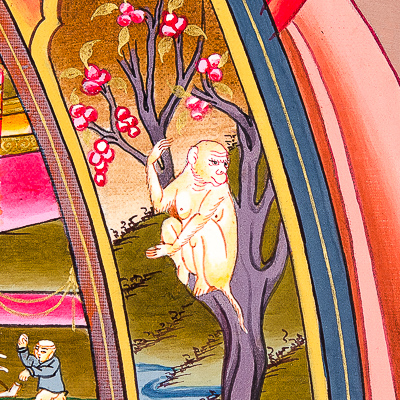
( 3 ) CONSCIOUSNESS
sanskrit. Vijnana
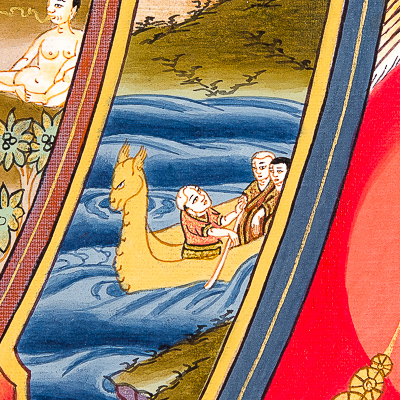
( 4 ) SHAPES AND NAMES
sanskrit. Namarupa
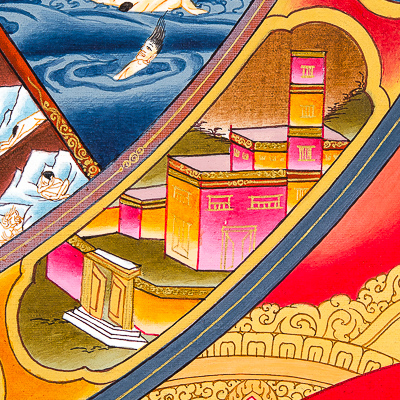
( 5 ) ACTIVATING SENSES
sanskrit. Ayatana
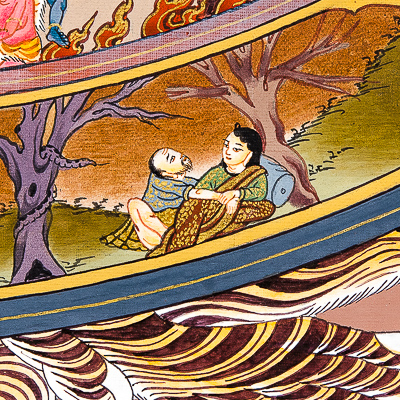
( 6 ) CONTACT
sanskrit. Sparsha
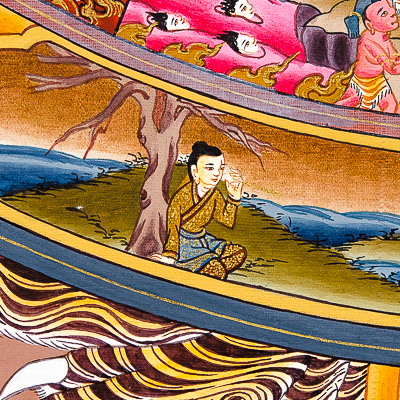
( 7 ) SENSATIONS
sanskrit. Vedana
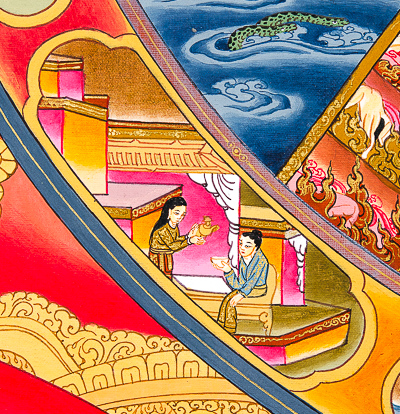
( 8 ) TO WANT
sanskrit. Trishna
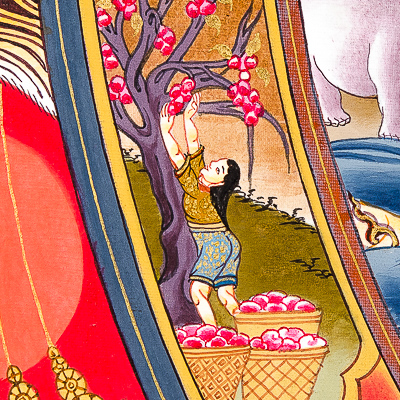
( 9 ) TO SEIZE
sanskrit. Upadana
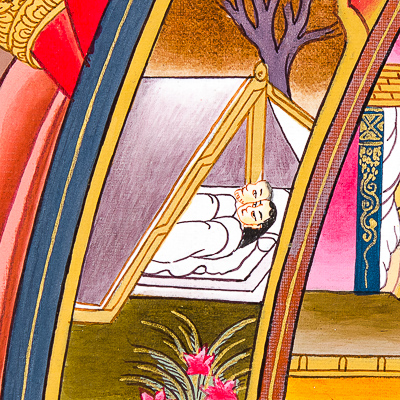
( 10 ) BECOMING
sanskrit. Bhava
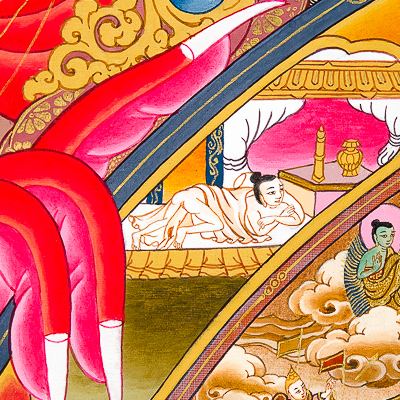
( 11 ) BIRTH
sanskrit. Jati
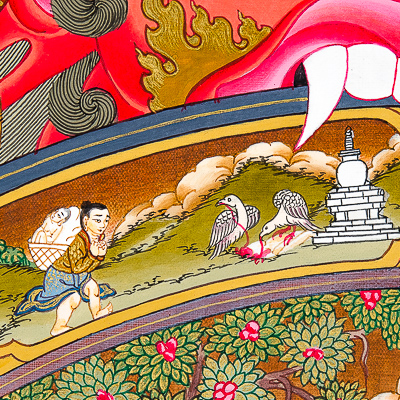
( 12 ) AGEING AND DEATH
sanskrit. Jaramarana
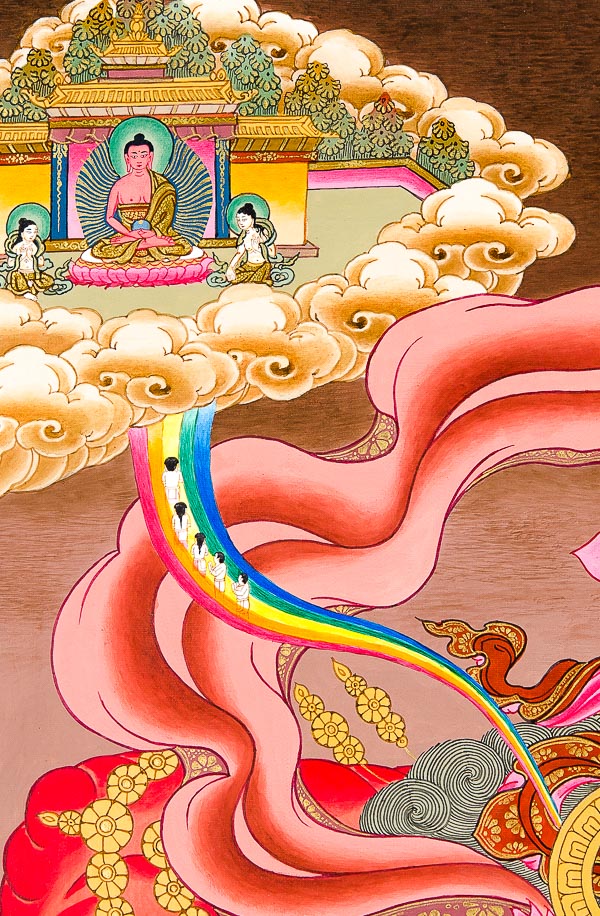
WHAT DID WE LEARN ?
There are many different concepts that we must think about. Each thought and action that happens in our life leaves a lasting effect in our subconscious mind. And it is during these 12 phases that this effect is felt.
The idea of Bardo or the Intermediate State is fundamental to be able to fully understand the Wheel of Life. This article tried to cover the basics behind Bardo and provide a simple overview. There are numerous books that cover this topic in depth - I would personally suggest the Tibetan Book of the Dead - as this will provide a more philosophical and detailed approach to our topic !
The picture we see here demonstrates that the only true liberation from cyclic existence is Nirvana. Where those who have reach enlightenment leave the endless cycles of death and rebirth, to join the Buddhas - therefore it is important for us to try and display positive attitudes and qualities to those around us.
If Buddhism tell us anything it is that we are able to change and better our ways, there is always a light at the end of the tunnel.

Comments 1
Pingback: Samsara - The Wheel of Life | Thangka Mandala